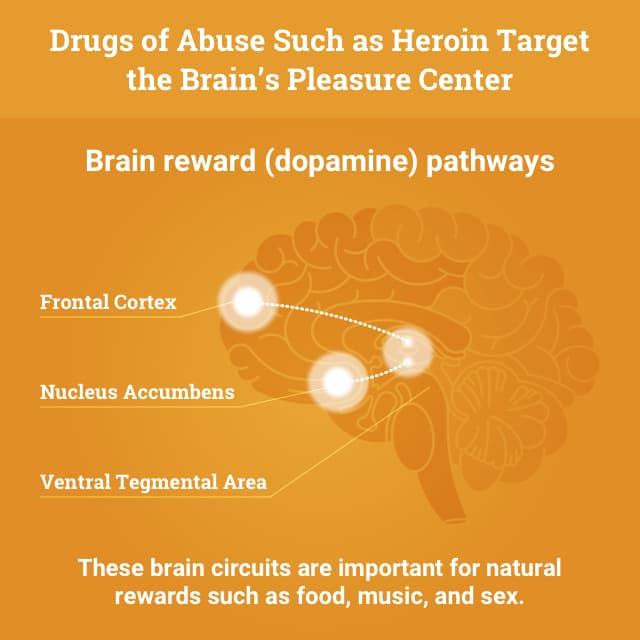
“Don’t Do Drugs”
The first time I heard this message I was in kindergarten, and I didn’t even know what drugs were. As I climbed up the elementary school ladder, I slowly began to understand the “basics” of drugs. I eventually came to the conclusion that there were two different “types” of drugs in the world:
- The “good” drugs that you take when you are sick to make you feel better
AND - The “bad” drugs that you take if you want to ruin your life
That’s what I was told.
As a child, this thought becomes ingrained in your mind, and how can it not? From the haunting textbook images of individuals before and after taking “bad” drugs to the countless warnings you hear from concerned parents, teachers, and the media, it is no surprise that you begin to develop an image of what a stereotypical drug addict looks like:

You think to yourself…
- Drug addicts have:
- Rotten/Missing Teeth
- Wrinkled/Scabbed Skin
- Dry/Damaged Hair
- Drug addicts are:
- Criminals
- Lazy/Unproductive
- Liars/Manipulators
You begin to tell yourself that there’s no way that you would ever become a drug addict. You’re not “that kind of person.” That’s where you’re wrong.
Anyone can be a drug addict .
Individuals develop this preconceived notion that they could never become a drug addict, and that even if they try a drug, just once, they won’t get hooked.
The fact of the matter is, no one knows how drugs of abuse will affect them until they try them, and for many, after just once, it’s too late. In fact, one’s genetic makeup accounts for 50% of their risk of becoming an addict. The other 50% chance is the result of one’s environment, specifically whether or not one exposes themselves to drugs of abuse.
So why are drugs so hard to quit?
They change the way your brain works.

The brain has a specific system that drugs of abuse “manipulate”: The Mesolimbic Pathway
- This pathway is involved in the feelings of reward that often accompany naturally rewarding things such as food, sex, and caffeine.
- This reward comes in the form of the “feel-good” neurotransmitter known as dopamine.
- Dopamine originates in cell bodies within the ventral tegmental area (VTA) of the brain. The axons that release dopamine leave the VTA and terminate in a separate area of the brain known as the nucleus accumbens (NAc).
- In addition to the NAc, dopaminergic axons can also be found in the hippocampus (involved in memory), the amygdala (involved in emotional responses), and the prefrontal cortex (involved in cognitive functioning).

- When an individual experiences something rewarding, the concentration of dopamine within these brain regions increases, and they immediately experience a sense euphoria.
- Drugs of abuse in particular have a way of making this euphoric “high” last for a prolonged period of time.
- For example, cocaine blocks the re-uptake of dopamine so that it is able to stimulate the reward system for a longer period of time, inducing a more intense “high”.
- Drugs of abuse increase the reward to a certain extent:
- Whenever a drug of abuse is taken, molecules known as dynorphins bind to specialized receptors in the brain known as kappa opioid receptors.
https://www.researchgate.net/figure/Schematic-representation-of-dynorphin-kappa-opioid-receptor-system-regulation-on_fig1_310512791 - The binding of dynorphins to these receptors inhibits the release of dopamine into the reward pathway.
- Therefore, after repeated exposure to the drug of choice, less and less dopamine is released into the reward pathway, and the “high” decreases.
- The individual’s brain does not understand this, however, as it has become re-wired to expect the “high” that it has previously experienced.

https://www.evergreendrugrehab.com/blog/opioid-withdrawal-kicking-habit-without-losing-mind/ - The individual will begin to crave the drug of abuse intensely, and will go through withdrawal symptoms if it is not administered.
- To satisfy the brain, the individual will need to take more of the drug of choice to deliver the same amount of reward….
……… and there you have it, you’ve become addicted.
- To satisfy the brain, the individual will need to take more of the drug of choice to deliver the same amount of reward….
- The individual’s brain does not understand this, however, as it has become re-wired to expect the “high” that it has previously experienced.
- Therefore, after repeated exposure to the drug of choice, less and less dopamine is released into the reward pathway, and the “high” decreases.
- The binding of dynorphins to these receptors inhibits the release of dopamine into the reward pathway.
- Whenever a drug of abuse is taken, molecules known as dynorphins bind to specialized receptors in the brain known as kappa opioid receptors.
So what’s the take home message?
It’s exactly what you’ve been hearing since you were in kindergarten:
Don’t do drugs.
- Individuals often do not know how drugs will affect them, until it’s too late.
- No one is “immune” to becoming a drug addict.
- And once you’re addicted your brain will change itself in a way to ensure that you’ll stay hooked.
- But, quitting isn’t impossible!
The road to recovery isn’t an easy one, but it is possible.
There are many resources that you can use to help yourself or a loved one on the road to recovery:
- Substance Abuse and Mental Health Services Association
- https://www.samhsa.gov/find-help/national-helpline
- American Addiction Centers
- This link provides a list of local rehabilitation and treatment services by state
- https://drugabuse.com/
- This link provides a list of local rehabilitation and treatment services by state
https://www.ncbi.nlm.nih.gov/pmc/articles/PMC1920543/
https://www.ncbi.nlm.nih.gov/pmc/articles/PMC3898681/